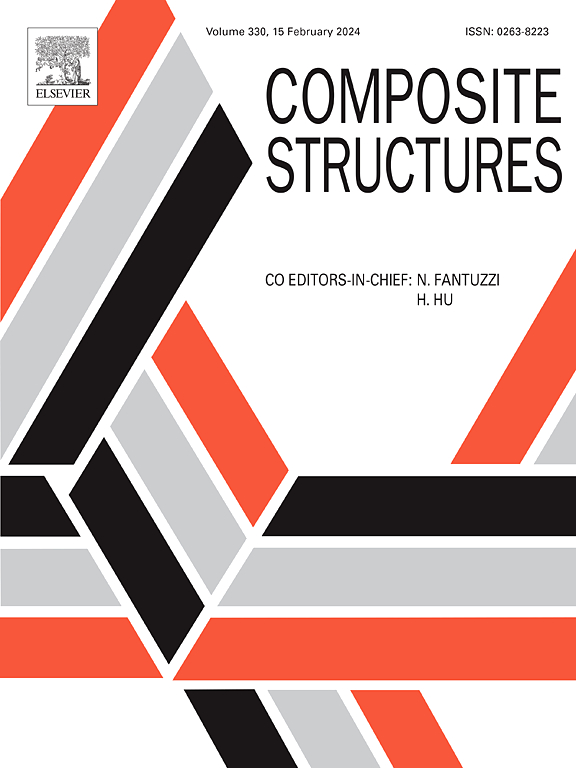循环载荷下无卷曲织物复合材料损伤演化与刚度退化的综合数字成像技术
IF 7.1
2区 材料科学
Q1 MATERIALS SCIENCE, COMPOSITES
引用次数: 0
摘要
开发了一种新的集成数字成像技术,用于自动表征无卷曲织物玻璃纤维/反应性热塑性交叉层合板在张力-张力循环加载下的损伤并同时监测刚度退化。在峰值应力为50% UTS的情况下,层压板的刚度退化表现出四个不同的阶段,包括在第一个循环中由于90°纤维束裂纹的产生而显著下降,由于裂纹的增殖和扩展直至饱和而逐渐下降,由局部分层裂纹扩展组成的稳定阶段,以及试样破坏前的突然下降。在峰值应力为75% UTS时,0°和90°纤维束裂纹均在第一阶段出现,随后扩展速度加快,饱和时90°纤维束裂纹密度降低。事实证明,集成数字成像技术可以有效地将损伤事件与刚度退化联系起来,从而更深入地了解玻璃纤维/热塑性复合材料的疲劳行为。本文章由计算机程序翻译,如有差异,请以英文原文为准。
Integrated digital imaging technique for correlation of damage evolution and stiffness degradation in non-crimp fabric composite materials under cyclic loading
A novel integrated digital imaging technique was developed to automatically characterize damage and simultaneously monitor stiffness degradation in non-crimp fabric glass fiber/reactive thermoplastic cross-ply laminates subject to tension–tension cyclic loading. Under a peak stress of 50 % UTS, the laminate exhibited four distinct stages of stiffness degradation, including a significant drop during the first cycle due to 90° fiber tow crack initiation, a gradual decrease due to crack multiplication and propagation up to saturation, a stable phase comprising localized delamination crack propagation, and a sudden drop prior to specimen failure. Under a peak stress of 75 % UTS, both 0° and 90° fiber tow cracks developed during the first stage followed by an accelerated growth rate and reduced 90° tow crack density at saturation. The integrated digital imaging technique proved to effectively correlate damage events with stiffness degradation, leading to a deeper understanding of the fatigue behavior of glass fiber/thermoplastic composites.
求助全文
通过发布文献求助,成功后即可免费获取论文全文。
去求助
来源期刊

Composite Structures
工程技术-材料科学:复合
CiteScore
12.00
自引率
12.70%
发文量
1246
审稿时长
78 days
期刊介绍:
The past few decades have seen outstanding advances in the use of composite materials in structural applications. There can be little doubt that, within engineering circles, composites have revolutionised traditional design concepts and made possible an unparalleled range of new and exciting possibilities as viable materials for construction. Composite Structures, an International Journal, disseminates knowledge between users, manufacturers, designers and researchers involved in structures or structural components manufactured using composite materials.
The journal publishes papers which contribute to knowledge in the use of composite materials in engineering structures. Papers deal with design, research and development studies, experimental investigations, theoretical analysis and fabrication techniques relevant to the application of composites in load-bearing components for assemblies, ranging from individual components such as plates and shells to complete composite structures.
 求助内容:
求助内容: 应助结果提醒方式:
应助结果提醒方式:


